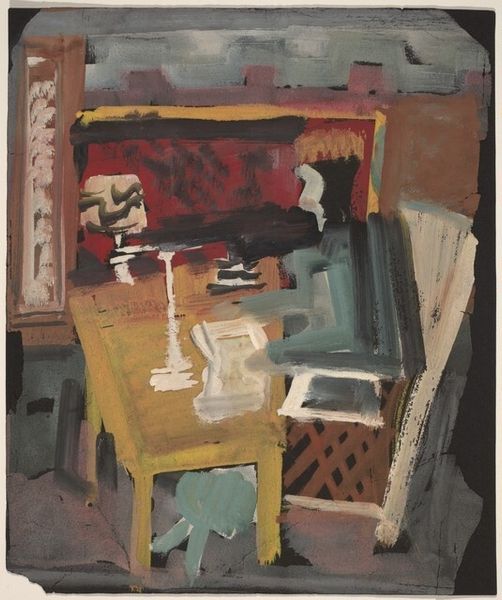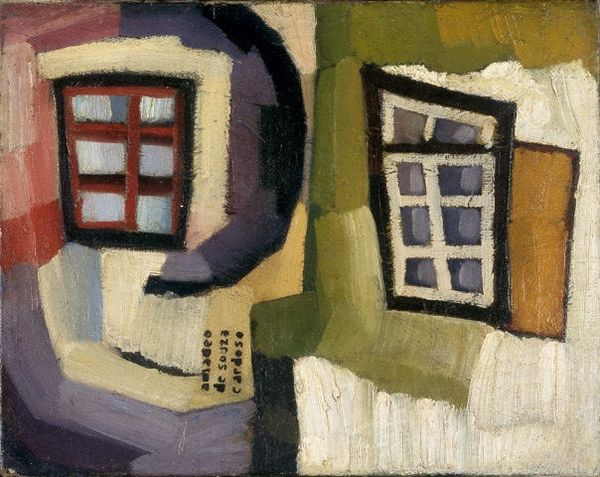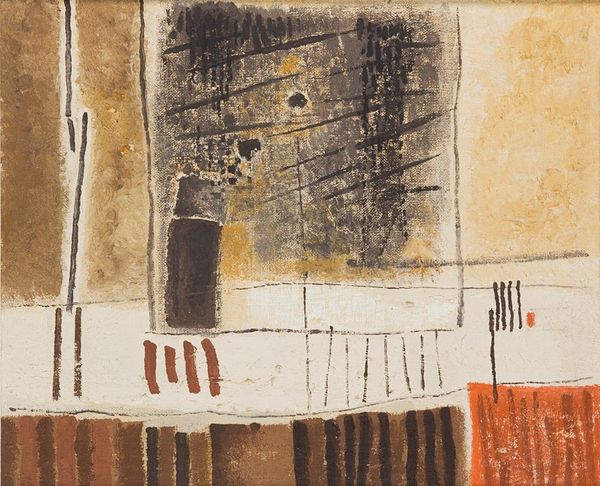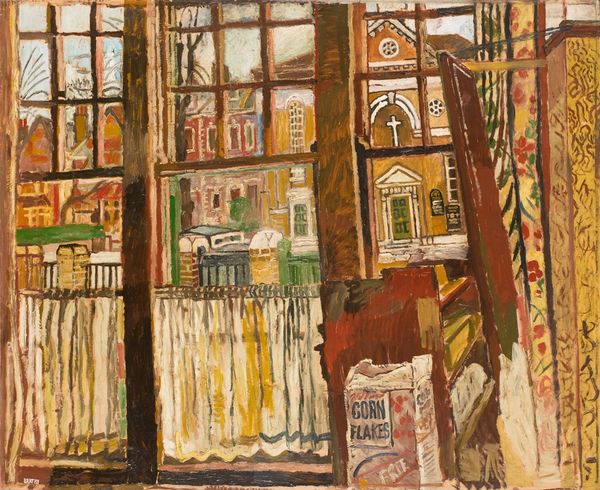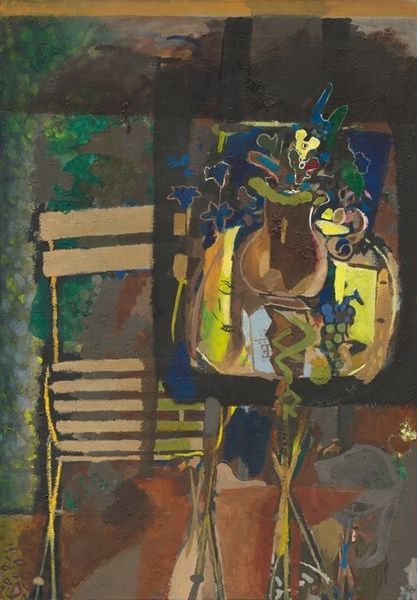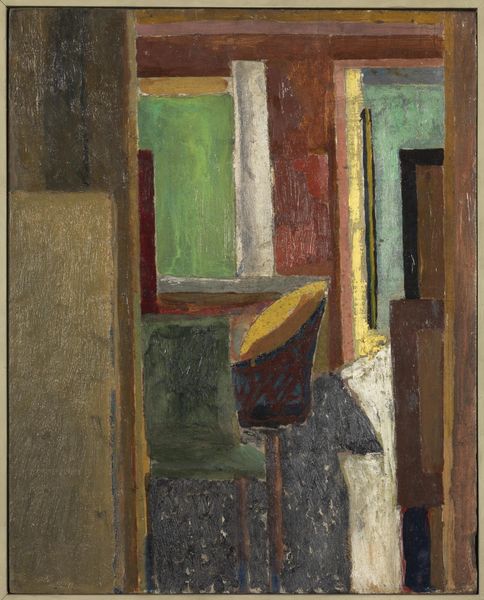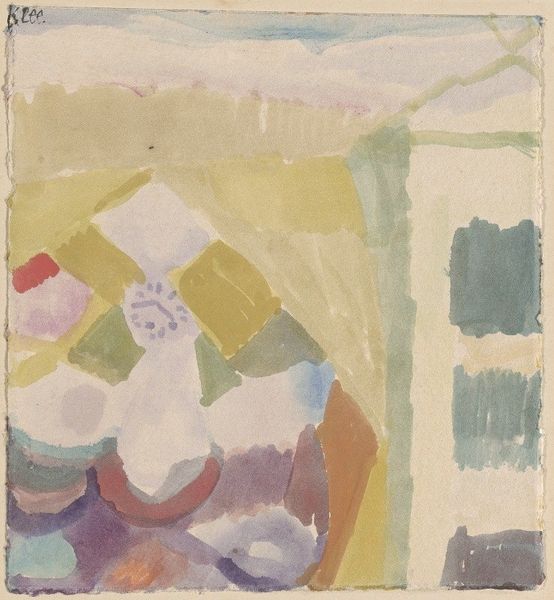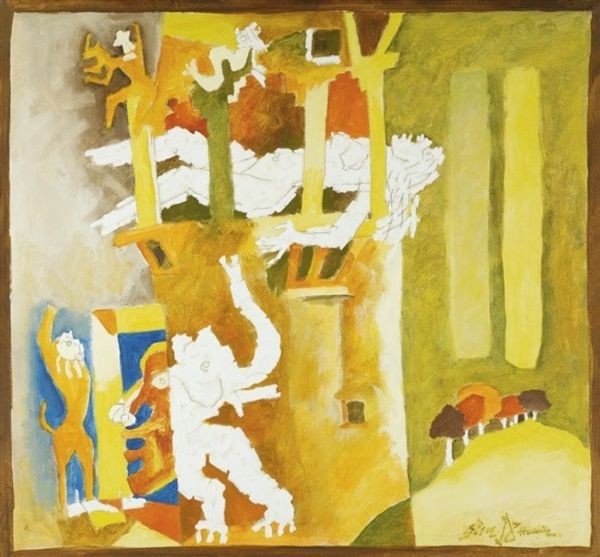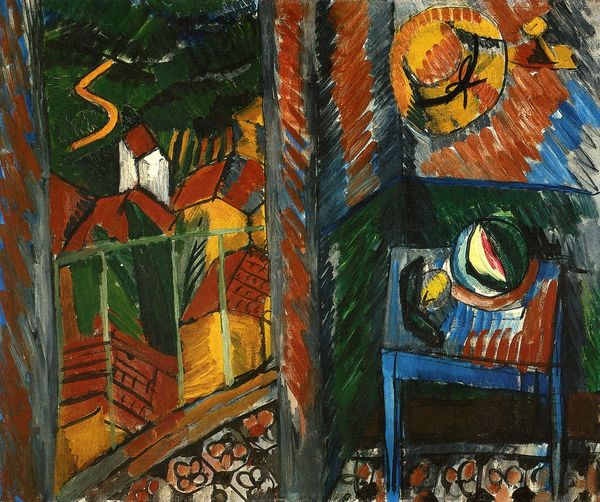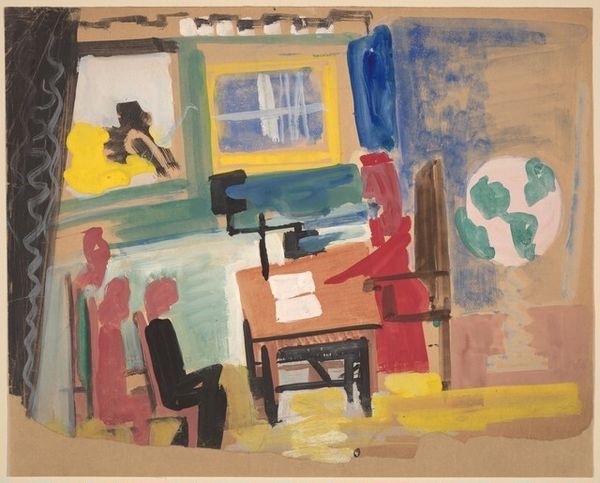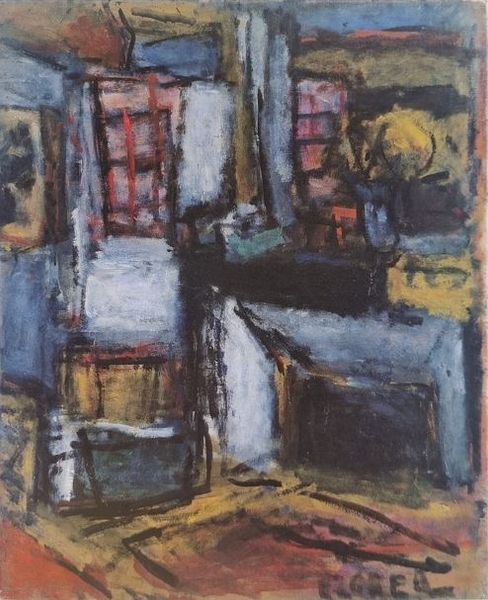
painting, watercolor
#
abstract-expressionism
#
abstract painting
#
water colours
#
painting
#
form
#
watercolor
#
geometric
#
abstraction
#
painting art
Copyright: Betty Parsons,Fair Use
Curator: Today, we’re looking at Betty Parsons's “Untitled (Abstraction).” This painting, realized with watercolor, exemplifies the artist's exploration of form and space. Editor: It strikes me as a playful composition, almost childlike in its arrangement of geometric blocks and swirling figures. The use of color is also quite striking, with its contrasts and muted tones. Curator: Parsons was deeply involved in the Abstract Expressionist movement, though often overlooked. Her gender played a huge role; her work has largely been defined through that lens. I want to understand this Abstraction's relationship to her broader work that sought to define the feminine in form. How did she negotiate male-dominated narratives in that era? Editor: I am captivated by Parsons’s use of watercolor here. It seems almost unorthodox for such a monumental abstract statement; this use of such a light and sometimes looked-down-upon medium gives insight to her process. Watercolor provides an accessibility to artists due to it being quick to dry, it's ability to produce expressive paintings and it's easily transportation—she was actively subverting traditional artistic norms. How did she treat her materials and how can her paintings be understood by understanding that use? Curator: It's precisely those tensions and contrasts she plays with – between fragility and boldness, control and accident – that reflect the challenges of female artists seeking recognition within patriarchal structures. In examining her body of work, one can discern recurring themes of identity and expression, not just her materials or "process" but through a consciously female lens. Editor: Parsons was, if nothing else, economical. Looking closer at "Untitled (Abstraction)," one sees repeated blocks and what appears to be re-applied areas, showcasing that process from its foundation. It also pushes back against the fetishization of certain media over others—painting can happen anywhere, with anything, especially with watercolor paints. It suggests the idea of a truly egalitarian and accessible mode of artmaking. Curator: What is particularly radical is Parsons's subversion of the 'masculine' aesthetic of the Abstract Expressionists via distinctly 'feminine' associations, so the art reflects back onto her gender as Parsons's personal journey is essential for a thorough interpretation. The art acts as a space to confront traditional and sexist narratives, reflecting that intersection. Editor: Yes, that element of surprise and spontaneity resonates so profoundly! "Untitled (Abstraction)" truly challenges us to rethink value: in process, in material, and the making of art. Curator: Yes! We cannot help but think of her art and her gender expression in relation to the patriarchy that she has constantly had to negotiate. Editor: Absolutely, reflecting deeply on both the tangible and conceptual frameworks embedded in this deceptively straightforward piece really makes us consider what is the meaning behind art making, overall.
Comments
No comments
Be the first to comment and join the conversation on the ultimate creative platform.
